#women entrepreneurs in british columbia
Text
Millions of dollars will be given to the B.C. Indigenous Cannabis Business Fund
#indigenous#first nations#native people#canada#cannabis#women entrepreneurs#entrepreneurship#british columbia#diversity#inclusion
0 notes
Text
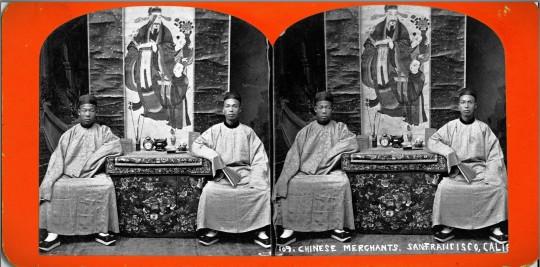
“109. Chinese Merchants, San Francisco, Calif.” c. 1890 – 1899? Stereograph by Nesemann Woods Gallery, Marysville CA (from the Wallace B. Chung and Madeline H. Chung Collection of the University of British Columbia Library).
Merchants of Old Chinatown
In the late 1840s and the 1850s, Chinese merchants and traders made their initial foray into California. By February 1849, the number of Chinese had increased to 54 and by January 1850, historians would count 787 men and two women in San Francisco. In December 1849, the Alta California newspaper reported that 300 Chinese convened a meeting at the Canton Restaurant on Jackson Street for the purpose of organizing the “Chinese residents of San Francisco” and engaging the services of lawyer Selim E. Woodsworth to “act in the capacity and adviser for them.”
In his book, Genthe’s Photographs of San Francisco’s Old Chinatown, historian John Tchen wrote about the vanguard of old San Francisco Chinatown’s merchant elite as follows:
“These pioneers hailed primarily from the Sanyi (Saam Yap) or Three Districts [三邑], as well as the Zhongshan area in the immediate vicinity of Canton. It's important to note that Nanhai (Namhoi) and Panyu (Punyu) stood out as the most prosperous districts within Guangdong Province. Their economic pursuits ran the gamut from cultivating fertile agricultural lands, breeding silkworms and fish, to crafting silk textiles, producing ceramics for both domestic and international markets, and engaging in various other commercial endeavors.
“What set apart the merchants and artisans from Sanyi and Zhongshan was their mastery of a more refined city dialect compared to their Siyi (Sei Yap) counterparts, who mainly consisted of poorer, rural communities. Remarkably, over 80 percent of Chinese immigrants in North America originated from the Siyi [四邑] region. A noteworthy portion of these Sanyi merchants belonged to the emerging class of compradores, individuals who facilitated business transactions on behalf of Western trading companies. These California-based Sanyi merchants thus brought prior experience in dealings with Western entrepreneurs, and California was seen as a promising arena to expand these lucrative connections.”
With the completion of the Transcontinental Railroad in May of 1869, the more sophisticated and adventurous members of San Francisco’s pioneer Chinese merchant community would begin exploring other cities in the United States in search of opportunity.

“Sing-Man, Chinese Merchant, San Francisco” and “Choy-Chew, Chinese Merchant, San Francisco,” Harper’s Weekly, September 4, 1869, wood engraving on paper. Artist unknown, artist after a photograph by Mathew Brady, 1869 (from the collection of the National Portrait Gallery).
For example, in the Harper’s Weekly article (Sept 4, 1869, page 574), the reporter identified merchant Choy Chew as a San Franciscan and a talented linguist of sufficient intellect and stature to be invited to give a speech at a European-American banquet. He reportedly visited Chicago with a fellow merchant, Sing Man, before traveling to New York where the pair were regarded as “representatives of Chinese industry and commerce.”
At the banquet in Chicago, Choy Chew delivered the following remarks:
”Eleven years ago I came from my home to seek my fortune in your great Republic. I landed on the golden shore of California, utterly ignorant of your language, unknown to any of your people, a stranger to your customs and laws, and in the minds of some an intruder — one of that race whose presence is deemed a positive injury to the public prosperity. But gentlemen, I found both kindness and justice. I found that above the prejudice that had been formed against us, that the hand of friendship was extended to the people of every nation, and that even Chinamen must live, be happy, successful and respected in ‘free America.’ I gathered knowledge in your public schools; I learned to speak as you do; and, gentlemen, I rejoice that it is so; that I have been able to cross this vast continent without the aid of an interpreter; that here in the heart of the United States I can speak to you in your own familiar speech, and tell you how much, how very much, I appreciate your hospitality; how grateful I feel for the privileges and advantages I have enjoyed in your glorious country; and how earnestly I hope that your example of enterprise, energy, vitality, and national generosity may be seen and understood, as I see and understand it, by our Government …
”We trust our visit, gentlemen, may be productive of good results to all of us; that the two great countries, East and West, China and America, may be found forever together in friendship, and that a Chinaman in America, or an American in China, may find like protection and like consideration in their search for happiness and wealth.“
-- from the Scientific American, new series, vol. 21, no. 9, p. 131 (August 28, 1869)
The founding in 1888 of the Merchants’ Exchange in old San Francisco Chinatown represented the logical culmination of several decades of robust business operations by the pioneer Chinese merchants in the city and beyond.
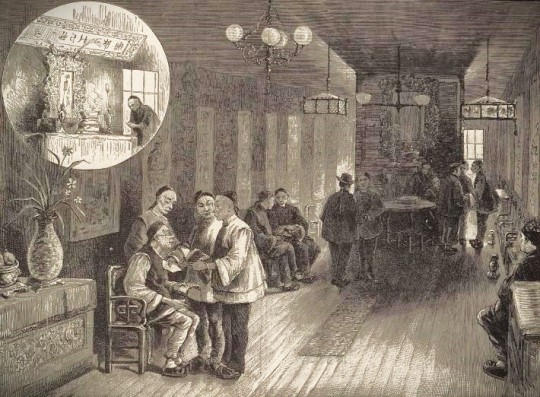
“Chinese Merchants’ Exchange, San Francisco.” Lithograph from Harper’s Weekly, Vol. 26, March 18, 1882 (from the collection of The Bancroft Library, University of California, Berkeley.
In his book, A Guide Book to San Francisco (published by The Bancroft Company in 1888), John S. Hittell described the Chinese Merchants Exchange as follows:
“At 739 Sacramento Street are the new rooms of the Chinese Merchants' Exchange. They are fitted up in the ordinary Chinese style, and though presenting no special attraction to the visitor, the business transacted there is of considerable importance. A Chinese merchant, contractor, or speculator never starts on any enterprise alone. He always has at least one partner, and in most cases several. He makes no secret of his transactions, but converses about them at the exchange, and often goes there in search of capital when his own means are insufficient. He sometimes applies to that institution to find him a capable man to manage a new business which he is about to start. If, as often happens, one be selected who is in debt to other members, they make arrangements which will not interfere with the new enterprise; and the debtor is not unfrequently released from his obligations.”
Fung Tang
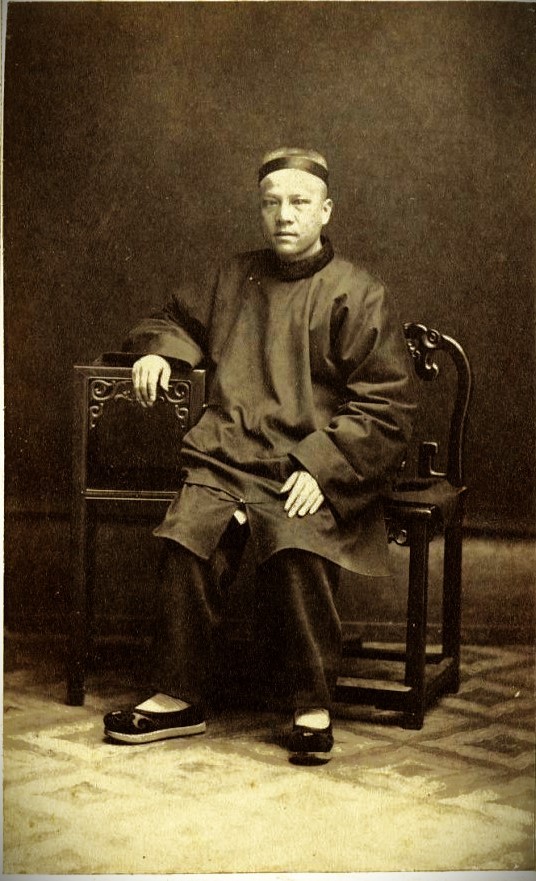
Fung Tang, c. 1870. Photo by Kai Suck (from the collection of the California Historical Society).
The address of the Merchants’ Exchange at 739 Sacramento Street was hardly surprising, as it shared the same building which had housed the mercantile house of a legendary merchant, Fung Tang. Historian York Lo, in his article for The Industrial History of Hong Kong Group website, described Fung as “a native of Jiujiang (Kow Kong) in the Nanhai county (南海九江) in Guangdong, Fung Tang followed his uncle Fung Yuen-sau (馮元秀) to California in 1857 at the age of 17 and worked at Tuck Chong & Co (德祥號辦莊), a trading business founded by his uncle and his fellow Nanhai native Kwan Chak-yuen (關澤元).” In the Langley San Francisco directory of 1868, the Tuck Chong & Co. is listed as “(Chinese) merchants” located on Chinatown’s first main street at 739 Sacramento Street.
“In his spare time,” York Lo writes, “he learned English from Reverend William Speer and became fluent in the language. With his linguistic skills, he became a bridge between the Chinese and the white community in San Francisco and even befriended Peter Burnett, the first Governor of California, who described Fung in his memoir as ’a cultivated man, well read in the history of the world, spoke four or five different languages fluently including English, and was a most agreeable gentleman, of easy and pleasing manners’.”
As such, Fung Tang must be considered as a logical client for the pioneer Chinatown photographer, Kai Suck. A professional studio portrait would have conferred respectability in the eyes of the non-Chinese businessmen and politicians with whom he interacted. In fact, Fung appears to have deployed the same portrait now reposing in the collection of the California Historical Society as part of his commercial advertising in Hong Kong.
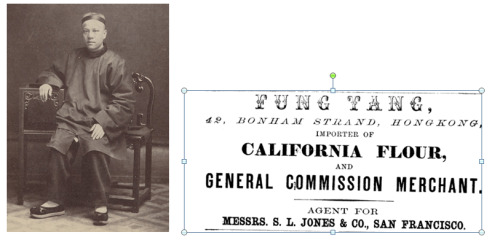
An advertisement for Fung Tang’s flour import business in the Sheung Wan district of Hong Kong.
For more details about Fung’s business exploits and his public service, including his election to the board of directors of the Tung Wah clinic (the original predecessor organization of the future Chinese Hospital), readers are encouraged to read York Lo’s piece here: https://industrialhistoryhk.org/fung-tang-the-firm-the-family-the-transpacific-metals-trade-and-tin-refinery/?fbclid=IwAR3DU6pEcaEw6w2uH1OZvFBFL8vg-Rl4keBS-VkbcttFuHKlx973g3ZjcY8
Tchen asserts that the influx of British and other Western imperialist powers into China’s major treaty ports transformed the status of merchants engaged with Western trading companies. Rather than operating on the margins of Qing-era society, the merchants gained unprecedented prestige and influence. Beyond China's borders, they experienced far more freedom to engage in trade and amass substantial profits without the worry of state-imposed restrictions. They rapidly acquired the necessary language skills and business acumen to navigate their newfound opportunities.
San Francisco’s early Chinese merchants swiftly grasped the English language and American business practices, excelling in American-style transactions, and developing strategies for fostering positive relations with the general San Francisco populace. The local press affectionately labeled them "China Boys." They made conscious efforts to participate in the celebrations of significant American holidays, further endearing themselves to the San Francisco community.
This approach significantly bolstered their rapport with the local population, as evidenced by the California Courier's glowing praise: “We have never seen a finer-looking body of men collected together in San Francisco. In fact, this portion of our population is a pattern for sobriety, order, and obedience to laws, not only to other foreign residents, but to Americans themselves," declared Cornelius B. S. Gibbs, a marine-insurance adjuster, in 1877. Gibbs emphasized the high esteem in which Chinese merchants were held among white business circles. “As men of business, I consider that the Chinese merchants are fully equal to our merchants. As men of integrity, I have never met a more honorable, high-minded, correct, and truthful set of men than the Chinese merchants of our city.”
Attempts to participate in mainstream society, however, were not always welcomed by lower-class elements of white society as evident in this news account about Fung Tang’s appearance in San Francisco’s California Theatre in September 1869:
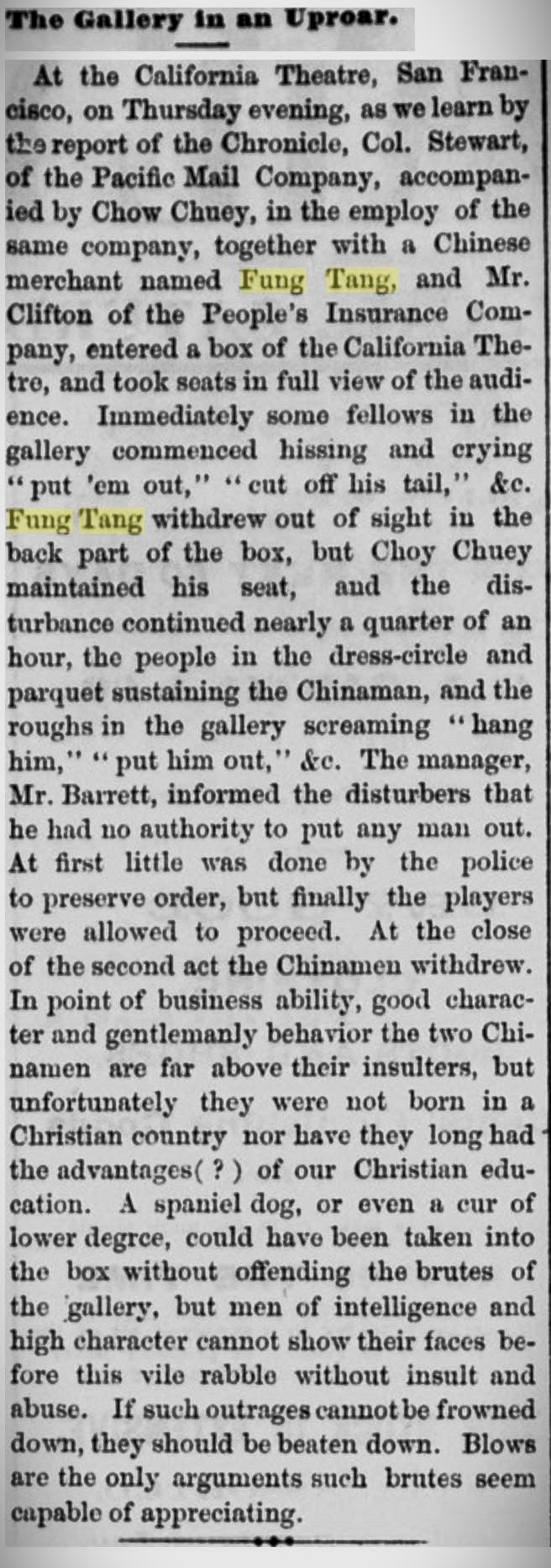
Clipping from the San Jose Mercury News, September 18, 1869 (vol. I no. 42)
Fung Tang’s transpacific success in San Francisco was hardly unique among the ranks of Chinatown’s early merchant class. He exemplified the business acumen of his fellow pioneering entrepreneurs and their establishment of transpacific trading posts in strategic locations.
Lai Chun-chuen and Chy Lung Co.
The story of the pioneer business of Chy Lung & Co. predates the history of San Francisco Chinatown itself, and its establishment spurred the rise of Chinatown’s first commercial strip, Sacramento Street (唐人街; canto: “Tohng Yahn Gaai”) or “Chinese Street.”

An enlargement of the stereograph taken by Carleton Watkins for the Thomas Houseworth & Co., and “[e]ntered according to Act of Congress, in the year 1866 by Lawrence & Houseworth, in the Clerk’s office of the District Court of the United States, for the Northern District of California.”
“Among the early Chinese settlers were merchants like Lai Chu[sic]-chuen,” the late historian Judy Yung wrote in her pictorial book, San Francisco’s Chinatown (published by the Chinese Historical Society of America). “Upon arrival in 1850, he opened Chinatown’s first Bazaar at 640 Sacramento Street, importing teas, opium, silk, lacquered goods, and Chinese groceries.”
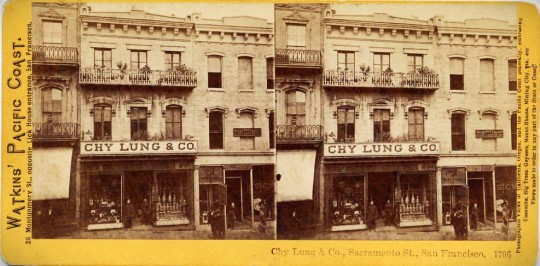
"Chy Lung & Co., Sacramento St., San Francisco. 1796" c. 1866. Photograph by Carleton Watkins for his Watkins' Pacific Coast stereograph series (from a private collection).
Chy Lung’s founder, Lai Chun-chuen (a.k.a. Chung Lock), came to San Francisco in 1850 from Nam Hoi county. According to UC professor Yong Chen, the business founded by Lai and, his partners Xie Mingli, Fang Ren, Sheng Wen, and Chen Nu, appear in the earliest business directories for San Francisco. A “Chyling, china mer, 188 Washington” appears in the Parker directory for 1852-1853. The Colville’s directory of 1856 lists a “Chy Lung (Chinese) mcht, Canton Silk and Shawl Store, 166 Wash’n,” and the business would remain on Washington Street (moving to 612 Washington St. by 1858) until 1863 when it relocated to 642 Sacramento Street. By 1865, the Chy Lung & Co. had either expanded or taken over the address of 640 Sacramento Street.

Portion of the stereograph “No. 391 Chinese Store. Chy Lung & Co.,” c. 1866. Published by Lawrence & Houseworth (from in the collections of the Society of California Pioneers, Wells Fargo Corporate Archives, and the Library of Congress).
“He imported Chinese prefabricated houses and cargoes of Chinese goods, teas, silk, lacquer and Porcelain wears, and even opium,” historian Phil Choy wrote. “The drug that made American merchants millionaires in the China trade now found its way to California for both the Chinese and American markets Chy Lung was one of only two Chinese businesses at the time that advertised in an American newspaper, the Daily Alta California.”

“No. 391 Chinese Store. Chy Lung & Co., Sacramento Street.” c. 1866. Published by Thomas Houseworth & Co. (from in the collection of the New York Public Library).
Lai Chun-chuen is remembered not only for his business acumen but also as the principal author of the objections to the anti-Chinese movement in California and plea for civil rights as published in the pamphlet, Remarks of the Chinese Merchants of San Francisco, upon Governor Bigler’s Message, and Some Common Objections (San Francisco: Whitton, Towne, 1855).
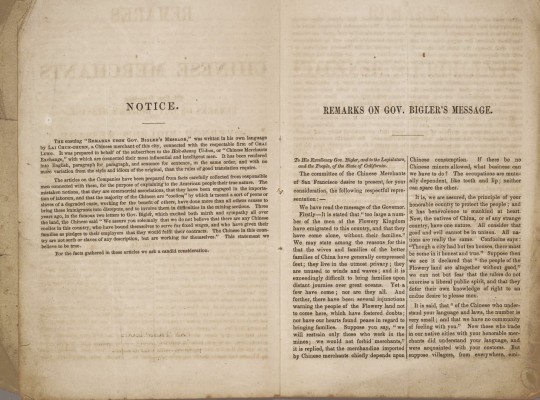
The preface to Remarks of the Chinese Merchants of San Francisco upon Governor Bigler’s Message, and Some Common Objections of 1855 (from the collection of the Bancroft Library). The second line of the first paragraph identifies Lai Chun-chuen as “a Chinese merchant of this city, connected with the respectable firm of CHAI LUNG.”
Chy Lung & Co. continued to play a leading role in the Chinese merchants exchange until Lai Chun-chuen’s death on August 30, 1868. The business remained a fixture of the Chinatown business community for the rest of the 19th century, and it adopted the new communications technology of the telephone, as shown by the Pacific Telephone directory for the Chinese Exchange in 1902.

The listing for Chy Lung & Co. as it appeared in the Wells Fargo directories of Chinese business for 1878 and 1882.
The Chy Lung & Co. business, and others established by Chinatown's merchants, soon comprised a source of both tangible and symbolic power within the rapidly growing Chinese community in the American West. As the Chinese immigrant population swelled, businesses catering to their specific needs diversified and expanded. A hierarchical structure emerged, influenced by both economic factors and the district of origin. The wealthier Sanyi individuals typically presided over larger, commercially successful enterprises, including import-export firms. Those from the Nanhai District dominated the men's clothing and tailoring sector, as well as butcher shops. The neighboring Shunde District populace exercised control over overalls and workers' clothing factories.

“S.F. Chinatown 1898 C12”. Photographer unknown (from the Martin Behrman Collection of the San Francisco Public Library). A well-attired merchant and possibly his son walk south on Spofford Alley from Washington to Clay Street.
Meanwhile, Chinese hailing from the Zhongshan District, which represented the second-largest Chinese population in California, were prominent in the fish and fruit orchard businesses, as well as in the production of women's garments, shirts, and underwear.
"Quan Quick Wah"
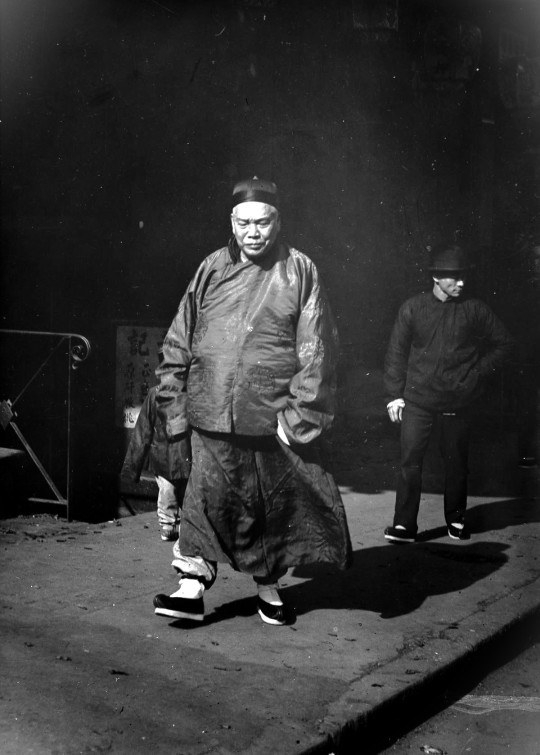
“Merchant and Bodyguard” c. 1896 – 1906. Photograph by Arnold Genthe (from the collection of the Library of Congress). A descendant of the large, confident man shown in traditional robes identifies him as San Francisco merchant “Quan Quick Wah.” Based on other photographs of this Chinatown location, the pair appears to be walking on the west side of Waverly Place toward its intersection with Clay Street. In his book about Genthe’s Chinatown photographs, historian Jack Tchen wrote about this imposing figure followed by a bodyguard as follows: “The powerfully built man dressed in traditional silk robes has been described as a tong leader. Whether he was a tong leader, a wealthy merchant, or both, his dress and carriage convey a strong presence. Tong leaders came to rival the power of wealthy merchants. The man following the merchant or tong leader is said to have been his bodyguard, protecting him from the attack of a rival tong. In the photograph the two are passing under ornate cloth lanterns that indicate a pawnshop business.”

"Merchant and Bodyguard” c. 1896 – 1906. Photograph by Arnold Genthe (from the collection of the Library of Congress). This full photograph in the Library of Congress shows that Genthe’s image fortunately included a portion of the sign for the entrance to a basement restaurant. The signage (which appears in other photographs of this area), indicates that the merchant and bodyguard were photographed walking on the west side of Waverly Place (at about no. 23 and 25 Waverly) and toward the southwest corner of its intersection with Clay Street. Tchen’s guess that the background store frontage was a pawnshop is probably correct, as the “Qung Hing Art Co.” pawnshop occupied space at 25 Waverly during the 1890s. The headquarters of the merchant-controlled, Ning Yung district association was located at 23 Waverly.
Yee Ah-Tye
In old Chinatown, merchants’ personal use of bodyguards or alliances with fighting tongs were common. The organization and fragmentation of district and clan associations, along with sharp business competition, often placed lives, as well as livelihoods, at risk. For example, the Kong Chow association traced its origin to about 1853, when the influential community leader, Yee Ahtye (a.k.a. “George Athei”) persuaded members of his Yee clan of Sunning, which had remained in the Sze Yup Co. (after a number of clans split off to organize today’s dominant Ning Yung Association), to finally secede. The action by the Yee clan was joined by clans from Hoiping and Enping counties after a dispute over the presidency of the Sze Yup Co. in 1862. The resulting new association, the Hop Wo, soon challenged the merchant Ah-Tye for the custody of a piece of land on which Ah-Tye had allowed the Sze Yup Association to build a headquarters building. Yee eventually deeded the land to a new Kong Chow Association, which his fellow Sunwui merchants founded in 1866. The dispute over this property raised to such a level that Yee and his associates were compelled to organize a secret society, the Suey Sing Tong, to protect the asset and enforce his decision.

Portrait of Yee Ah-Tye (courtesy of the Chinese Six Companies). Yee was an elite merchant of Chinatown and was considered a co-founder of the Suey Sing Tong.
Born around 1829 in Guangdong province, Yee Ah-Tye had arrived in San Francisco just before the gold rush at around 20 years old. In spite of his humble beginnings, Yee had learned English in Hong Kong and swiftly ascended to a position of authority within the influential Sze Yup [pinyin: "Siyi"] Association. The Sze Yup Association, along with similar Chinese district associations, played a crucial role in assisting newly arrived Chinese immigrants during the 19th century. The organizations provided accommodation and job opportunities.
Aside from his many business accomplishments, Yee famously cross paths with the legendary, San Francisco madam Ah Toy. The conflict arose when Ah Toy accused Yee of demanding a tax from her prostitutes on Dupont Street. Despite her origins in China, Ah Toy had by then lived in America for three years and become familiar with its legal system. She boldly threatened to take legal action against him, a move she would not have dared to undertake in China.
The August 1852 report in the Daily Alta California newspaper highlighted Ah Toy's shrewdness, emphasizing her knowledge of living in America and her ability to navigate the legal system. She resided close to the police station, fully aware of where to seek protection, having faced legal proceedings herself numerous times. The reporter gleefully suggested that Yee use caution about overstepping his authority, warning that he might lose his dignity and end up in custody.
A year later, Yee faced legal trouble himself, being arrested for assault and grand larceny. The San Francisco Herald alleged Yee “inflicted severe corporeal punishment upon many of his more humble countrymen … cutting off their ears, flogging them and keeping them chained for hours together.”
After moving to Sacramento in 1854, Yee also relocated his business activities in 1860 to La Porte, California, where hydraulic and drift mining operations for gold occurred. Yee acquired a partnership in a store called Hop Sing & Company which supplied merchandise and Chinese contract laborers. By 1866, it was the richest Chinese store in that town, with a value of $1,500 (about $36,000 in 2005 dollars).
According to one of his descendants, Lani Ah Tye Farkas, the pioneer Yee Ah Tye reportedly lived thirty-four years in La Porte as a successful merchant, running the Hop Sing and Company store and representing the Chinese community in the area. He had three wives and four children, three of whom were girls. Unlike most other Chinese fathers at the time, he invested in the education of his daughters – he even bought a piano for his youngest daughter, Bessie, who became an accomplished pianist. As a leader in the Hop Sing Association, he founded a small hospital to serve the elderly Chinese men of La Porte.
“The temple ruins at San Francisco's Lincoln Municipal Park Golf Course was once part of the Lone Mountain Cemetery, a gift of Ah Tye,” Lani Ah Tye Farkas wrote in 2000. “Other glimpses of his life in America can be seen in deeds, mining claims, tax assessments, newspaper articles, and land that he once owned. Yee Ah Tye's legacy, however, is in his descendants. Many Chinese with common last names like Chan, Lee, and Wong may have no relationship with one another. However, the descendants of Yee Ah Tye have borne his unique last name through six generations, in the words of the Yee family genealogy, ‘spreading like melon vines, increasing continuously’” Yee died in 1896. (see: https://scholarworks.calstate.edu/downloads/pc289j76z)
Contract Labor
At the lower end of the business hierarchy, the Siyi or Four District residents comprised the largest and least affluent group of Chinese immigrants. They typically occupied occupations such as laundries, small retail shops, and restaurants and the bulk of the laborers in the contract labor system.
In the period preceding the Civil War, there was a concerted effort by certain individuals to introduce contract laborers into the United States. A letter penned by C. V. Gillespie to Thomas Larkin on March 6, 1848, sheds light on this initiative. Gillespie expressed a keen interest in the idea of bringing Chinese emigrants to the country, suggesting that a variety of skilled workers and laborers could be sourced:
"One of my favorite subjects or projects is to introduce Chinese emigrants into this country,… Any number of mechanics, agriculturists and servants can be obtained. They would be willing to sell their services for a certain period to pay their passage across the Pacific…."
The practice of importing contract laborers to the United States began in the late 1840s and continued through the 1850s. However, enforcing labor contracts proved to be a challenging endeavor on American soil. A case in point involved an Englishman who, upon bringing fifteen Chinese laborers to the country bound by a two-year contract, found that they immediately reneged on their agreement upon arrival. Authorities, at the time, were reluctant to intervene in such disputes.
In 1852, Senator George B. Tingley introduced a bill in the California State legislature aimed at legalizing and facilitating the enforcement of contracts allowing Chinese laborers to sell their services to employers for periods of up to ten years at fixed wages. This proposal, however, faced significant public backlash and was ultimately defeated after a heated debate. The subsequent year saw members of Chinese companies admitting that they had initially imported workers during the early years of the Gold Rush. Yet, due to unprofitability and difficulties in enforcing labor contracts, they abandoned this practice.
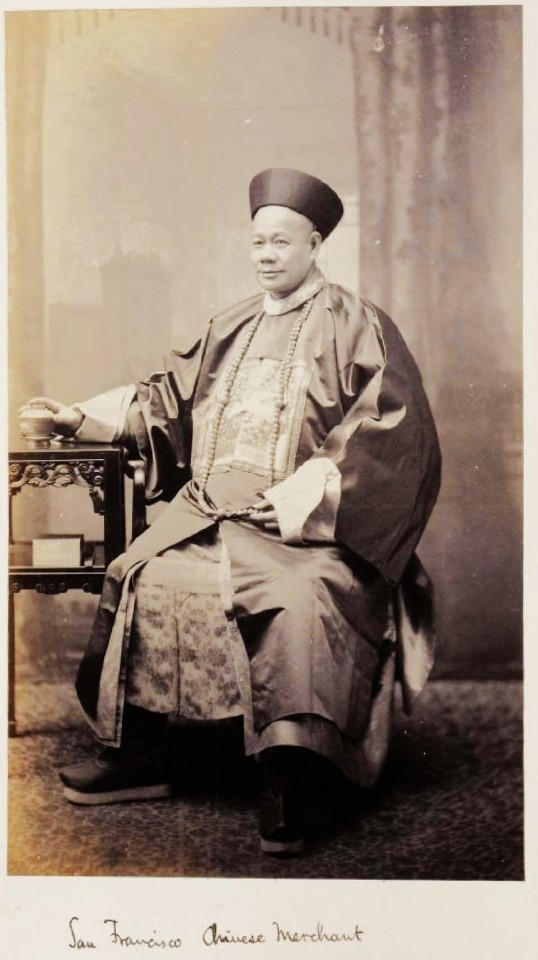
“San Francisco Chinese Merchant” no date. Photographer unknown, possibly by Ann Ting Gock (from a private collection). This rare and unusual image suggests that the individual might not have been a mere merchant at all, but a member of the Chinese consular staff. He is seen wearing his 清代官帽 (canto: "ching dai gwun moe") or official's headwear. The Qing official headwear or Qingdai guanmao (Chinese: 清代官帽; pinyin: qīngdài guānmào; lit. 'Qing dynasty official hat'), also referred to as the “Mandarin hat” in English, is a generic term which refers to the types of guanmao (Chinese: 官帽; pinyin: guānmào; lit. 'official hat'), a headgear, worn by the officials of the Qing dynasty in China. The merchant is attired in a "changshan" or "changpao" or long robe. The robe worn in the photo was derived from the Qing dynasty-period "qizhuang" (the traditional dress of the Manchu people). Changshan were, and are, traditionally worn for formal pictures, weddings, and other formal Chinese events.
Credit-ticket System
Beyond the initial years, it became widely acknowledged that Chinese immigrants arrived in the United States voluntarily, free from any servile contracts or duress. Many emigrants either financed their own passage or received assistance from relatives and friends already residing in California. The prevailing method for the majority of Chinese immigrants during the 19th century was the credit-ticket system. Under this system, an emigrant would receive financial support for their passage in a Chinese port. Upon reaching their destination, the emigrant was expected to repay this debt using their future earnings. It is important to note that this system differed from the contract labor arrangement, where laborers were bound to serve for a specified duration.
The precise origins of the credit-ticket system remain uncertain. However, merchant brokers in Hong Kong were established to provide advanced passage funds, approximately forty dollars, to the emigrants. Corresponding entities in the United States were responsible for collecting these debts and aiding the newly arrived immigrants in finding employment.
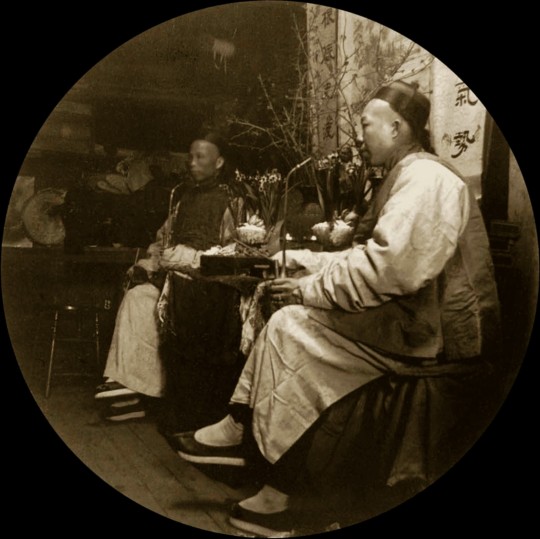
Two merchants with pipes. No date, photographer unknown (from a private collection).
The stores and offices that the merchants of Chinatown had opened starting in the mid-19th century became the basis of real and symbolic power in the growing regional community of Chinese living in the American West. That power, including the ability to mobilize for social change within the narrow role afforded Chinese in the society, manifested itself in the family and district associations headed by local merchants.
“The merchant class has traditionally been the one sector of Chinese society able to foster unity and bring about social change,” wrote historian Thomas W. Chinn about the role of the merchant class in San Francisco Chinatown (and beyond). “The merchant-directors of the Chinese Consolidated Benevolent Association must be well-established businessmen in the local community as well as outstanding members of their own family associations. They have already played a leading role in their own social circles before becoming merchant-directors, and they enjoy a great deal of respect. . . Thus the friendly corner grocer may simultaneously be the president of his family association and his district association as well as a merchant-director.”
Lew Kan
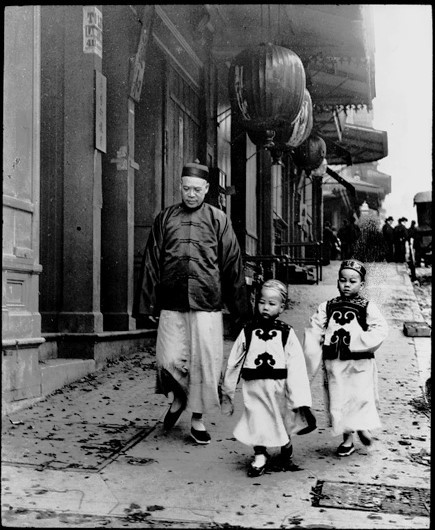
“Children of High Class” c. 1900. Photograph by Arnold Genthe (from the Genthe photograph collection, Library of Congress, Prints and Photographs Division). Merchant Lew Kan (a.k.a. Lee Kan) walking with his two sons, Lew Bing You (center) and Lew Bing Yuen (right). According to historian Jack Tchen, “Lew Kan was a labor manager of Chinese working in the Alaskan canneries. He also operated a store called Fook On Lung at 714 Sacramento Street between Kearney [sic] and Dupont. Mr. Lew was known for his great height, being over six feet tall, and his great wealth. The boys are wearing very formal clothing made of satin with a black velvet overlay. The double mushroom designs on the boys’ tunics are symbolic of the scepter of Buddha and long life.” The photograph appears to have found the trio walking down the south side of Sacramento Street below Dupont Street.
By the time photographer Arnold Genthe had photographed merchant Lew Kan and his two sons on Sacramento Street (as well as two other earlier photos of their four sisters in Portsmouth Square), Lew had already attained legendary status as one of Chinatown’s leading merchants. Born in 1851, Lew entered the US in 1866.
Author Roland Hui (in his biography of pioneer Chinese American industrialist Lew Hing), wrote about Lew Kan and his dry goods business called Lun Sing & Co. at 706 Sacramento Street as follows:
“He started Lun Sing, one of the oldest businesses in Chinatown, around 1867, a year after he immigrated to the U.S. In 1896, the business gained notoriety by harboring a young Chinese revolutionary named Sun Yat-sen during his first visit to the continental United States. Sun advocated overthrowing the Qing monarchy and establishing a Chinese republic. His ideas were too radical for the politically uninitiated Chinese community. Kang Youwei, the architect of the ill-fated “Hundred Day Reform” in China in 1898, favored establishing a constitutional monarchy around Emperor Guangxu. Forced into exile after the power-hungry Empress Dowager crushed his reform, Kang launched the Chinese Empire Reform Association, also known as Baohuanghui (Save the Emperor Society), the following year in Victoria, Canada. Baohuanghui quickly gained widespread support among overseas Chinese since the idea of having an emperor at the top of the social order who ruled with the Mandate of Heaven had been ingrained in the Chinese psyche for thousands of years. The San Francisco Baohuanghui chapter was founded in 1899 at 146 Waverly Place. Lew Kan supported Kang’s political agenda despite having met Sun several years earlier, and in 1901 became the president of the San Francisco chapter of Baohuanghui. Many scholars observed that Baohuanghui was the first organization that evoked the patriotic sentiments of overseas Chinese. And when Liang Qichao, Kang's most famous student, stopped over in San Francisco during his 1903 America tour, thousands of Chinese flocked to listen to his speeches. As the man who organized these community-wide activities, Lew Kan's stature and influence in San Francisco Chinatown must have been substantial. In addition, he was one of the wealthiest Chinese merchants, reportedly owning several general merchandise stores with an estimated net worth of $2 million. That was an astronomical sum in those days. In addition, he was a director of the Kong Chow Company, a district association representing Xinhui."
Decline of Merchant Influence
The organizational expression of Chinatown’s merchant elite, the Chinese Six Companies, wielded considerable authority within San Francisco and beyond. The Six Companies and its constituent district associations comprised the quasi-government of Chinese America, offering social services, mediating disputes, and representing the community's interests to external forces. With the enactment of the Chinese Exclusion Act in May 1882, their grip on power began to weaken.

Portrait of a merchant with fan and scroll. No date, photograph possibly by Shew’s studio (based on the detail of the end-table), from the collection of the Stanford Libraries.
The decline of the Six Companies’ influence can be attributed to various reasons. One significant factor was their inability to adapt swiftly to the evolving socio-economic landscape within Chinatown. As the community faced new challenges, including the punitive extension of Chinese exclusion with the Geary Act of 1892, the Six Companies struggled to effectively navigate these changes, leading to a loss of faith among the populace in their ability to address emerging issues.
The Geary Act of 1892 extended and strengthened the Chinese Exclusion Act of 1882, requiring most Chinese Americans – native and foreign-born -- to carry an internal passport in the form of certificates of identity or face arrest and deportation. It intensified discriminatory measures against the Chinese community, fostering widespread discontent and resistance.
In response, the Six Companies initiated a national boycott against the Geary Act. The boycott aimed to unify Chinese immigrants and their supporters across the United States, urging them to refuse compliance with the law as a form of protest. It gained substantial momentum, with significant participation from Chinese communities in various cities, voicing opposition to the Act's discriminatory provisions.

The board of directors of the Chinese Six Companies, no date. Photographer unknown (from the collection of the Bancroft Library). Based on the screen panels in the background (which remain in the Six Companies’ meeting hall at 843 Stockton Street in San Francisco), the photo appears to have been taken after 1906.
Despite its initial vigor, several factors led to the ultimate collapse of the national boycott against the Geary Act. First, the federal government intensified its efforts to enforce the Geary Act. Authorities conducted widespread raids and inspections, threatening deportation and imposing harsh penalties on those failing to comply. The fear of reprisals and the potential disruption to livelihoods coerced many Chinese immigrants into reluctantly acquiescing to the Act's demands.
Second, the broader American society exhibited little sympathy or support for the Chinese community’s plight. The prevailing anti-Chinese sentiment in the country and the lack of significant political backing from other institutions diminished the effectiveness of the boycott. Without widespread solidarity, the Chinese American community struggled to sustain its resistance.
Finally, the decision by the US Supreme Court in Fong Yue Ting v. United States, 149 U.S. 698 (1893), dealt a major legal setback to Geary Act resistance and undermined the credibility of the Six Companies. The decision validated the Geary Act and created an environment of fear within the Chinese American community. The inability to overturn the Geary Act by legal means diminished trust in the Six Companies’ capacity to protect the community's interests.

Photograph of a merchant from Chinese Business Partnership Case File for Quong Lee Company, c. 1896. Photographer unknown (from the files of the Department of Justice, Immigration and Naturalization Service, San Francisco District Office). The immigration investigative case file indicates that the individual in this photo was certified as a business partner and a "merchant" who was “able to travel to and from the U.S. as a ‘Chinese subject of exempt class’ under the ‘Chinese Exclusion Acts’ (1882-1943).” The Quong Lee & Co. (a.k.a. Quong Lee, Quong Lee Sing) operated what business directories from 1875 to 1905 variously described as a “tailor,” “general merchandise,” “clothing,” and “dry goods” business continuously at 828 Dupont Street. By the time this merchant sat for his photo in 1896, the national boycott led by Chinese merchant organizations against the Geary Act of 1892 had collapsed, and studio portraits such as this became an essential pieces of evidence to support applications for the coveted merchant exemption from the extended Exclusion Act.
This heightened sense of vulnerability played into the hands of tongs, which, capitalized on the weakened merchant community. Amidst the faltering influence of the Six Companies, tongs emerged as influential entities that would come to dominate Chinatown’s socio-political structure and shape mainstream society’s perceptions of the Chinese community for the next three decades.
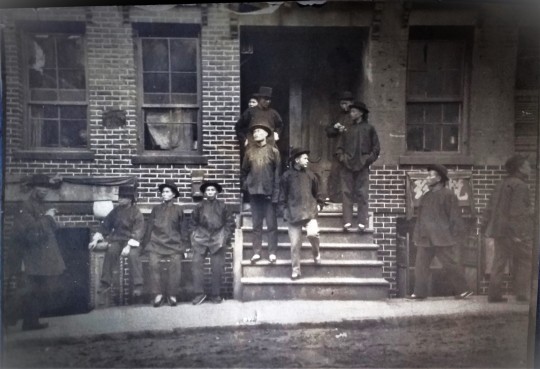
“High-binders Retreat” no date. Photograph by Goldsmith Brothers (from the Cooper Chow Collection of the Chinese Historical Society of America). Tong members at ease in front of their fraternal order's headquarters.
Tongs, in contrast to the Six Companies' diplomatic approach, adopted a more assertive stance in responding to discrimination and persecution faced by the Chinese community. Their readiness to protect their members (which also included merchants), and defy external pressures resonated with many disillusioned residents.

“A Haunt of the Highbinders in Chinatown.” Harpers Weekly, February 13, 1886 (from the collection of the Bancroft Library).
Moreover, the tongs during this period had begun to diversify their activities beyond traditional, illicitl sources of income such as prostitution, gambling, and drug distribution. Tongs began engaging in both legitimate businesses, including labor contracting for the Alaskan canneries. This diversification allowed them to accumulate resources, expanding their sphere of influence within Chinatown and beyond as alternative community governance structures, while still reserving often violent means to protect their interests.
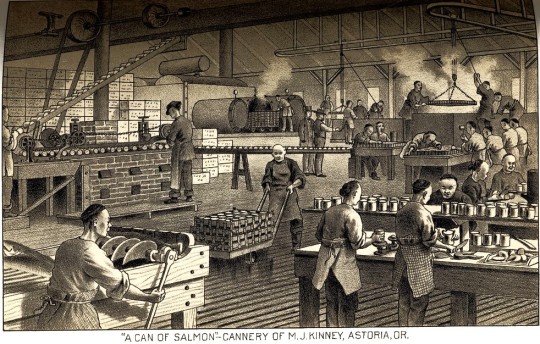
Chinese salmon cannery works in Astoria, Oregon, c. mid-1880s. Drawing from West Shore, June 1887, from the Special Collections, University of Washington). The early 20th century would be marked by violent struggles between tongs such as the Suey Sing and Bing Kung for control over the labor contracting business for the canneries.
The ascendancy of tongs at the turn of the century coincided with the republican movement in China. Historian Phil Choy wrote that the Chee Kung Tong, the original triad society, had been evolving in response to revolutionary movements in mainland China:
“Chee Kung Tong returned to its lofty political ideologies in 1900 when both Kang Yu-wei’s Reform Party and Sun Yat-sen’s Revolutionary Party sought its assistance. Originally the Chee Kung Tong supported Kang Yu-wei, but as Dr. Sun’s ideology gained popularity, the Chee Kung Tong, switched allegiance. When in 1904 immigration officials did not allow entry to Sun, the leader of the Chee Kung Tong, Wong Sam Ark, and the Tong’s attorney Oliver Stidger, along with Reverend Ng Poon Chew and Reverend Soo Hoo Nam Art, worked successfully for his release. Sun stayed at the Chee Kung Tong headquarters and used the society’s newspaper, the Chinese Free Press, to propagandize his revolutionary cause. Accompanied by Wong Sam Ark, Dr. Sun went on a nationwide tour to generate support and contributions.”
The tongs’ economic power and their active involvement in fundraising for the republican movement not only showcased their financial strength but also demonstrated their ability to wield influence as an overlapping and sometimes counter-force with the merchant elite. This dual role as (1) economic powerhouse within the local community, and (2) significant contributor to a revolutionary cause overseas underscored their influence. The growth of that influence came at the expense of the merchant elite in shaping both local and international affairs.
Merchants, however, would continue to exert influence through clan organizations, tongs, business associations, Nationalist Party of China chapters, and Chinese “consolidated benevolent associations” in San Francisco Chinatown and communities across North America through the exclusion era, war, and peace.
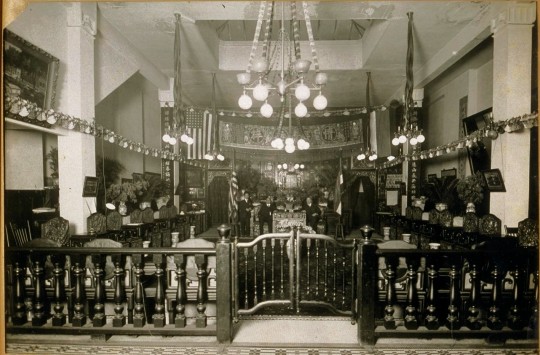
The meeting hall of the Chinese Six Companies, c. 1920 (by then incorporated as the Chinese Consolidated Benevolent Association) at 843 Stockton Street in San Francisco. Photographer unknown (from the Jese B. Cook collection of the Bancroft Library).
Chinatown's merchant community would face new challenges to their capacity as civic leaders when the political center of gravity across US Chinatowns would shift again in the last quarter of the 20th century.
[updated 2023-12-28]
#Chinatown merchants#Sing Man#Choy Chew#Chinese Merchants Exchange#Fung Tang#Lai Chun-chuen#Chy Lung & Co.#Yee Ah-Tye#Chinese Six Companies#Kai Suck#Ann Ting Gock#Lew Kan#Chee Kung Tong#Quong Lee & Co.
0 notes
Text
MENTAL HEALTH IS:
What do the words MENTAL HEALTH mean to you??
To me they mean over 10,000 people who have died of drug overdose deaths in the province of British Columbia where I live (most dying alone in their use because of the STIGMA they are afraid of and don't ask for help.)
To me the words Mental Health mean the 207 people every day who attempt suicide (to take their own lives - I was recently one.) Because we are too afraid to talk about suicide because it makes us feel uncomfortable.
To me the words Mental Health mean all the Entrepreneurs who never reach their levels of success because of the external validation they are constantly seeking.
To me the words Mental Health means feeling all alone never knowing you are not alone - Because we are too afraid to talk about our feelings.
To me Mental Health means all the women and girls who are told who they should be, how they should they act, think, etc according to others.
TO ME THE WORDS MENTAL HEALTH MEAN:
“THE MORE WE ARE WILLING TO TALK ABOUT IT THE LESS AFRIAD OTHERS WILL BE TO TALK ABOUT IT TOO.”
And this starts with me and you. This is why I am creating an annual event (such as the Terry Fox Run for cancer & The Run for The Cure Event,) but for Mental Health Awareness.
Life often becomes better because of the ideas of just one person.
And you can help me, and my idea make life a little bit better for other people too.
People like you, me, your daughter, son, granddaughter, grandson, mother, father, husband, wife, BFF.
0 notes
Text
Lululemon Benefits From Canada-British Columbia Immigration Agreement

Lululemon has been recognized as a significant investment project under the Canada-British Columbia Immigration Agreement, meaning it can more easily hire foreign nationals for highly-skilled jobs.
“For a variety of high-skilled occupations, Lululemon can hire foreign workers without needing to apply for a Labour Market Impact Assessment (LMIA),” notes Immigration, Refugees and Citizenship Canada (IRCC) on its website.
An LMIA is a document a Canadian employer needs to hire most types of foreign workers. A positive LMIA confirms there is a need for a foreign worker to fill the job at hand and that no Canadian worker is available to do the job.
LMIA applications are made by the employers and, once the LMIA is obtained, it must be sent to the candidate to accompany the work permit application. Generally, a temporary foreign worker will need a work permit and a positive LMIA in order to work in Canada.
By recognizing Lululemon as a significant investment project, the government has effectively spared the company a step and cut red tape in its recruitment of foreign nationals to work in Canada.
“Through the Temporary Workers Annex of the agreement, British Columbia can identify significant investment projects for consideration for a special exemption from the LMIA process,” notes the IRCC.
“Employment and Social Development Canada and IRCC then assess the project to determine if it meets the criteria.”
Chip Wilson’s Lululemon Is Committed To Diversity And Inclusion
Founded by billionaire serial entrepreneur Dennis J. “Chip” Wilson, who sold off his Westbeach skateboard and snowboard company the year before founding Lululemon Athletica, the athletic apparel company is incorporated in the United States but was founded and has its headquarters in Vancouver, British Columbia.
Lululemon has been estimated to have a workforce of 29,000 people and is committed to diversity and inclusion in the workplace.
Among the company’s initiatives to enhance diversity and inclusion is its creation of eight employee-led resource groups to provide equity-centred spaces for connection and development.
These eight groups represent those who are Black, Indigenous, Latinx, have chronic illnesses, struggle with mental health or disability issues, who are South Asian, Asian, or women in science, technology, engineering or mathematics fields, or LGBTQIA+.
Lululemon, which trades on the Nasdaq under the LULU ticker, has a market capitalization of more than $39.3 billion and announced in early January it was expecting its net revenue to be in the range of $2.66 billion to $2.70 billion for the fourth quarter of its 2022 fiscal year.
That would be 25 to 27 per cent increase compared to the company’s performance for the same quarter in 2021.
“We are pleased with our continued revenue growth and momentum in the business as our teams navigate a dynamic macro-backdrop,” said Lululemon CEO Calvin McDonald in a statement in January.
“In Q4, traffic remains strong across both physical and digital channels and we anticipate delivering another quarter of solid earnings growth consistent with our updated EPS forecast. 2022 has been a strong year for Lululemon and we remain focused on the significant opportunities ahead as we continue to deliver on our Power of Three x2 growth plan.”
Source: https://www.cimmigrationnews.com/lululemon-benefits-from-canada-british-columbia-immigration-agreement/
0 notes
Text
How has your life changed after immigrating to Canada?
“Moving to Canada was life changing experience”, women entrepreneur says!! Welcoming immigration policies, Inclusive culture, network hubs and Thinking of moving to Canada? Estelle who has called it home for 13 years describes her life in Canada and why she loves the country. driving school As a newcomer experiencing Canada for the first time, there may be some cultural differences you’re not familiar with. Adjusting to a new With its comparatively open and well-regulated immigration system, Canada has become a top destination for immigrants and refugees. A free health care system. After three months in Canada, driving school Filipino immigrants can take advantage of Canada’s universal health care system While assessments of life in Canada are correlated with economic factors such as personal income, they are also correlated with social factors 1. Insulin as a diabetes treatment – Invented by Frederick Banting, Charles Best and James Collip in 1922. · 2. Superman – Created by Canadian Some of the most popular Canadian lakes that you should check out include Lake Louise in Alberta, driving school Garibaldi Lake in British Columbia, Lake Come on an adventure with me to discover what Canada has to offer apart from Vancouver, Niagara Falls, and whale watching. There are at least
0 notes
Text
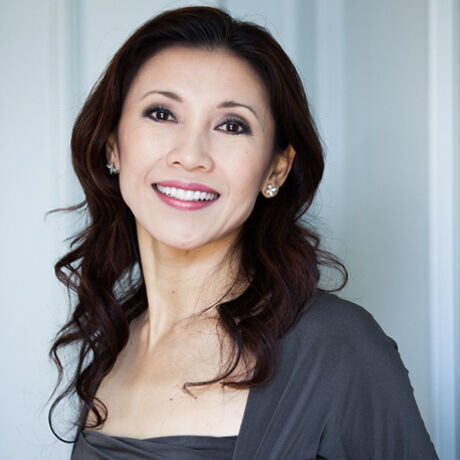
For September’s gathering we will explore creativity through the thematic lens of ‘DEPTH’ and are honoured to feature National Ballet of Canada principal dancer, published author, director, teacher, executive producer and entrepreneur, Chan Hon Goh.
With an illustrious stage career of over 20 years as Principal Dancer with the National Ballet of Canada, Chan-Hon Goh is one of the most prolific artists of her generation. Her delicate lyricism and emotional depth personify the essence of numerous lead roles. Extending her reach and always advocating for the arts, Ms. Goh serves as a jury member for several international competitions. She guest instructs and sets choreography for some of the most renowned companies in the world and since 2009 has been the Executive Producer of Goh Ballet’s critically acclaimed The Nutcracker, a holiday tradition in the City of Vancouver. Ms. Goh is a founding member of Vancouver’s Arts and Culture Policy Council, which assists in giving the creative community a voice.
Her accomplishments, with irrepressible devotion to the enhancement of the cultural life of Canada, have garnered several prestigious awards including the Queen Elizabeth II Diamond Jubilee Medal, the YWCA Women of Distinction Award, the New Pioneers Arts Award and the Best Teacher Award at the World Ballet Competition. In 2019, Ms. Goh was appointed as a member to the Order of Canada for her excellence in ballet as a principal dancer, artistic director and cultural ambassador. Most recently, Ms. Goh was recognized as the recipient of an honorary degree from the University of British Columbia for her significant contributions to society.
As usual, we asked Chan some probing questions to augment her biography as a glimpse into her life and relationship with creativity:
How do you define creativity and apply it in your life and career?
My life and career have always been intertwined and one feeds off another. Perhaps for me creativity is to be flexible & open with genuine intentions.
Where do you find your best creative inspiration or energy?
It comes to me at the oddest times, usually unexpected. Some may be fleeting but if it last, it’s usually the thing to do or to make happen. My environment whether real or imagined plays a part.
What’s one piece of creative advice or a tip you wish you’d known as a young person?
Don’t force it. And this is different than perseverance which we all should have.
Who (living or dead) would you most enjoy hearing speak at CreativeMornings?
Walt Disney.
What’s your one guilty creative indulgence?
To watch as many live performances as possible in New York or London in a row.
What are you reading these days?
Letters to a Young Poet by Rainer Maria Rilke.
How would you describe what you do in a single sentence to a stranger
That’s a hard one.
What’s the most recent thing you learned (big or small)?
There is nothing that is definite.
If you could do anything now, what would you do?
Give myself time to figure it out.
0 notes
Text
Million-Dollar Success Series: Finding Inner-Peace
Finding Your Inner Peace
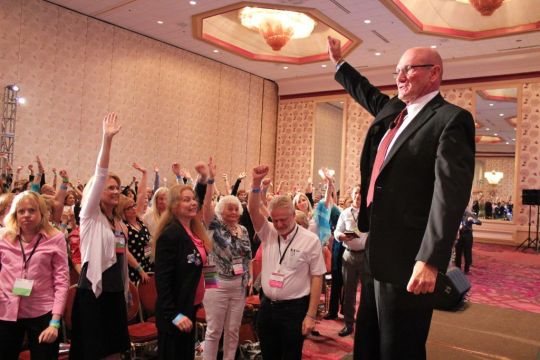
Hyrum W. Smith didn’t just create the Franklin Planner so people could plan their day. He created it to help people find inner-peace. Watch and listen to his online conversation withSandra Yancey , the Founder and CEO ofeWomenNetwork , on Sandra’s Million-Dollar Success Series: Finding Inner-Peace featuring Sandra’s conversation with Hyrum Smith.
Closing the Gap to Inner Peace
Hyrum will speak about The 3 Gaps, his latest book that invites you to explore yourself on a deeper level by looking at the gaps in your life around your beliefs, time and values. These gaps could hold the key to unlocking what is holding you back from reaching your full potential.
You will also learn about Sandra’s personal constitution and how that helps her run and sustain a multi-million-dollar business while balancing her personal life as a wife and mother.
More Info Click Here : Million-Dollar Success Series: Finding Inner-Peace
#women Business groups in dallas tx#successful women entrepreneurs#Women's Business Networking groups in Dallas#million women entrepreneurs#womens networking groups#Entrepreneur Networking#Female networking groups#Business networking Dallas TX#women entrepreneurs in british columbia
0 notes
Link
#online programme in entrepreneurship consulting in india#Best International Entrepreneurship Development Centre in India#Best Business Development Training & Education and National Outreach#new enterprise creation and management company in india#Business Entrepreneurship Online in india#business entrepreneurship courses#business schools for entrepreneurship in india#businessdevelopment enterprenuership businessdevelopmentinstitute businessdevelopmentcenter india enterprenuershipindia businessdevelopmenti#businessdevelopment#enterprenuership#businessdevelopmentinstitute#businessdevelopmentcenter#india#enterprenuershipindia#businessdevelopmentindia#entrepreneurshipcourse#women entrepreneurs in british columbia#entrepreneurs
0 notes
Text
Inspiring Living African ‘Female’ Architects, biography and ground-breaking achievements.
A personal research that led to the creation of africanfemalearchitects.work

Olajumoke Olufunmilola Adenowo, Nigerian (born 16 October 1968) is an architect by profession. She is also an entrepreneur and philanthropist, a public speaker, radio host and author. CNN described her as "Africa's Starchitect" and The Guardian (Nigeria) has described her as "the face of Architecture in Nigeria". In 2018 she was recognised by the Royal Institute of British Architects (RIBA) as one of the inspirational women in architecture today.
Adenowo has been featured in the architectural journal Architectural Record and has spoken at summits and conferences including the Global Women's Forum and Harvard Business School (African Business Club). She hosts a syndicated radio show on leadership "Voice of Change".
As an architect Adenowo's portfolio includes a host of multi-national and Nigerian clients including Coca-Cola, L’Oreal, The Nigerian Stock Exchange, Access Bank Plc and Guaranty Trust Bank.
As a public speaker, Adenowo has lectured on the arts, architecture, gender issues, women's empowerment and entrepreneurial activities in Africa. She has been featured by the international media such as CNN and Fortune.
- She started her own architecture and interior design firm AD Consulting in 1994. The firm is based in Lagos, Nigeria. At 14 she enrolled in Obafemi Awolowo University and graduated with a Bachelor of Science with Honours in Architecture at age 19. As an undergraduate she won the prize for Best Student Design. She obtained her Master's of Science in Architecture, with distinction, from the same university in 1991.
She is also an alumnus of Harvard Kennedy School (2019), the Yale School of Management (2016), Lagos Business School Chief Executive Programme (2002) and The IESE Business School at the University of Navarra in Barcelona, Spain (2005).
Adenowo has stated that her interest in architecture was ignited by visits to Paris and the Palais de Versailles as a young child, as well as living on the Obafemi Awolowo University campus. These inspired her design philosophy - the core lesson being that in its functionality, architecture must be sensitive to its climatic, technological, infrastructural and physical contexts.
Visit https://www.adconsultinglimited.com/architecture.html








2. Shahira Fahmy of Shahira Fahmy Architects -
Fahmy was born in Egypt. She holds a master's degree in Architecture from Cairo University (2004). In 2003 Received her Ph.D., from the Missouri School of Journalism, Columbia University, USA and She obtained her MA in Architecture from Cairo University in 2002-2003. In 2012, with London-based Delfina Foundation, Fahmy won an architecture competition and as a result worked on the architectural expansion of the Delfina Foundation headquarters near Buckingham Palace in London. which was completed in 2014. Fahmy also designed the modern Block 36 in Westown, Cairo. Fahmy has participated in various architectural exhibitions, including the Atlas of The Unbuilt World, The Home in the Arab world, Andermatt Swiss Alps AG, Green Good Design Exhibition, Cityscape Abu Dhabi, +20 Egypt Design, Cairo, Egypt, World Architecture Festival, Cityscape Dubai, MIPIM, Traffic, Furnex, LEAF Award, 100% Design/ 100% Futures, Salone Internationale del Mobile Salone Satellite, and Bibliotheca Alexandrina.

Art of Change mask from recycled paper to promote conscious design by repurposing waste.

Pyramid House - 2019

A House - 2011


1999 - Ahmed Bahaa Edin Cultural Center, Upper Egypt
3. Sarah Calburn was born in Johannesburg where she attended Roedean School, matriculating in 1981. She studied architecture at the University of the Witwatersrand, graduating in 1987, and in 1996 was awarded a master's degree for her research at Australia's Royal Melbourne Institute of Technology. The same year she set up an architecture practice in Johannesburg.
Calburn has also worked as an architect in Paris, Hong Kong, Sydney and Melbourne. In addition to many housing projects, she designed Johannesburg's Momo art gallery. She also serves on the committee of the Gauteng Institute for Architecture and was programme director of ArchitectureZA 2010, the first South African Architectural Biennale. aimed at creative urban development in Johannesburg. Calburn has also taught at the University of the Witwatersrand,the University of Cape Town and RMIT Melbourne.

Visit http://sarahcalburn.co.za/

Somerset House School

Cocoon House - Residential Project

Paul Smith - Retail Project
4. Anya Van der Merwe completed the Bachelor of Architecture (BArch) with Distinction in 1984 before moving to London, England, to further her studies at the Architectural Association, from where she graduated with an Architectural Association Graduate Diploma in History and Theory (AAGradDip)in 1987.

Van der Merwe Miszewski Architects is an award winning architectural practice based in Cape Town, South Africa. The company was founded in 1991 by directors Anya Van der Merwe and Macio Miszewski.Anya Van der Merwe and Macio Miszewski met at the University of Cape Town School of Architecture in the early 1980s. Anya left VDMMA as director in 2016.

VDMMA Tree House - 1999


De Beers Corporate Headquarters - 2004


Cape Town Internatonal Convention Centre - 2003


Cliff House- 2000
Visit https://www.vdmma.com/
5. Linda Mvusi (c. 1955 in Bloemfontein- ) is an actress and architect. Mvusi took an award for best actress[1] at the 1988 Cannes Film Festival for her role in the film A World Apart which was directed by Chris Menges. Mvusi was the first South African to get a best Actress award at Cannes.[2]

Mvusi also shared in an award for excellence for her architecture on the Apartheid Museum. She practices with her own company in South Africa.



6. Katherine Maree Otten, usually known as Kate Otten, (born 28 March 1964, Durban) is a South African architect, who has won numerous awards for her South African traditional work. Born in Durban, Kate Otten attended Roedean School in Johannesburg, matriculating in 1981. She then studied architecture at the University of the Witwatersrand, graduating in 1987. After working for a number of other practices, Otten established her own firm in 1989 in Johannesburg, just after one year of her graduation. She has designed community libraries, the waterfront development at Tzaneen, an art therapy centre in Soweto and the museum exhibition space at the former Women’s Jail at Constitution Hill which received a commendation from the South African Institute of Architects (SAIA). Kate has won many awards including the SAIA Award of Merit House Staude in 1998 to the Mbokodo Awards Architecture and Creative Design in 2013.
In 2020, She became the President of the South African Institute of Architects.

Visit http://kateottenarchitects.com/

House Blount

Law on Keyes


Art Therapy Centre
7. Co-Arc International Architects director Catharine Atkins and architect Malika Walele are the leading women behind the 55-story building on Maude Street, which was designed by Co-Arc’s emeritus partner, Francois Pienaar. — TimesLIVE - 2019

Malika Walele, South African, Master’s Degree in Architecture in 2015 at the University of the Witwatersrand. currently working as a full-time architect in Johannesburg, Co-Arc International architects.


Co-Arc International Architects director Catharine Atkins and architect Malika Walele are the leading women behind the 55-story building on Maude Street, which was designed by Co-Arc’s emeritus partner, Francois Pienaar. — TimesLIVE - 2019
Visit https://www.co-arc.com/
#architects#women architects#female architect#black female architect#design#architecture#noble pritzker#pritztker prize#feminism#leading architects#womenempowerment#women empowerment#research#blog
32 notes
·
View notes
Text
The 1619 Project
The first Africans to be brought as slaves to British North America landed in Port Comfort, Virginia in 1619. Thus began America's 400-year history with slavery and its effects, which continue to reverberate today. With The 1619 Project, the NY Times is exploring that legacy with a series of essays and other works that "aims to reframe the country's history, understanding 1619 as our true founding, and placing the consequences of slavery and the contributions of black Americans at the very center of the story we tell ourselves about who we are." The Columbia Journalism Review explains:
Contributors consider various modern quandaries -- rush hour traffic, mass incarceration, an inequitable healthcare system, even American overconsumption of sugar (the highest rate in the Western world) -- and trace the origins back to slavery. Literary and visual artists drew from a timeline chronicling the past 400 years of Black history in America; their work is presented chronologically throughout the magazine. Taken together, the issue is an attempt to guide readers not just toward a richer understanding of today's racial dilemmas, but to tell them the truth.
Nikole Hannah-Jones, who came up with the idea for the project, writes in an essay:
The United States is a nation founded on both an ideal and a lie. Our Declaration of Independence, signed on July 4, 1776, proclaims that "all men are created equal" and "endowed by their Creator with certain unalienable rights." But the white men who drafted those words did not believe them to be true for the hundreds of thousands of black people in their midst. "Life, Liberty and the pursuit of Happiness" did not apply to fully one-fifth of the country. Yet despite being violently denied the freedom and justice promised to all, black Americans believed fervently in the American creed. Through centuries of black resistance and protest, we have helped the country live up to its founding ideals. And not only for ourselves -- black rights struggles paved the way for every other rights struggle, including women's and gay rights, immigrant and disability rights.
Without the idealistic, strenuous and patriotic efforts of black Americans, our democracy today would most likely look very different -- it might not be a democracy at all.
Bryan Stevenson writes about America's criminal justice system:
The 13th Amendment is credited with ending slavery, but it stopped short of that: It made an exception for those convicted of crimes. After emancipation, black people, once seen as less than fully human "slaves," were seen as less than fully human "criminals." The provisional governor of South Carolina declared in 1865 that they had to be "restrained from theft, idleness, vagrancy and crime." Laws governing slavery were replaced with Black Codes governing free black people -- making the criminal-justice system central to new strategies of racial control.
These strategies intensified whenever black people asserted their independence or achieved any measure of success. During Reconstruction, the emergence of black elected officials and entrepreneurs was countered by convict leasing, a scheme in which white policymakers invented offenses used to target black people: vagrancy, loitering, being a group of black people out after dark, seeking employment without a note from a former enslaver. The imprisoned were then "leased" to businesses and farms, where they labored under brutal conditions.
And Jamelle Bouie on power in America:
There is a homegrown ideology of reaction in the United States, inextricably tied to our system of slavery. And while the racial content of that ideology has attenuated over time, the basic framework remains: fear of rival political majorities; of demographic "replacement"; of a government that threatens privilege and hierarchy.
The past 10 years of Republican extremism is emblematic. The Tea Party billed itself as a reaction to debt and spending, but a close look shows it was actually a reaction to an ascendant majority of black people, Latinos, Asian-Americans and liberal white people. In their survey-based study of the movement, the political scientists Christopher S. Parker and Matt A. Barreto show that Tea Party Republicans were motivated "by the fear and anxiety associated with the perception that 'real' Americans are losing their country."
54 notes
·
View notes
Link
Suzanne will draw in the crowd with her personal experience and candid advice on how to stand out in a crowded market place. This session will cover how to set yourself apart, start making connections and closing deals to make 6 and 7 figures.
Discover the Why of "Why" Your Business Isn’t Making More Money
Businesses don't fail; people quit.
When you fail to commit, you fail to succeed
Successful people aren't different from you, they've just made different decisions
#successful women entrepreneurs#women business owners and professionals#skilled coaching professionals#business networking group for women entrepreneurs#Business Network Association TX#Marketing Networking Events Dallas#Business networking Dallas TX#Women Networking Events Dallas#women entrepreneurs in british columbia
0 notes
Link
Online retailers have fewer points of contact to give pleasure compared to physical retailers. The advantage of the efficiency of online shopping can come at the cost of the tactile and practical experience with a product before making a purchase.
#Success Minded Business Owners#business women network new york#Growth strategies for successful business owners#Success strategies for entrepreneurs#Success strategy for new entrepreneurs#Business Network events#women's groups in dallas#Entrepreneur Networking Group#dallas female business owners#women entrepreneurs in british columbia#Business networking for new entrepreneurs#Business Network Association TX#female business owners networking#Marketing Networking Events Dallas#Entrepreneur Networking#Business Networking Group
0 notes
Photo

I am so happy (thrilled, really! absolutely busting!) that I get to introduce to you one of my favorite characters (drum roll, please): TOBY WONG!
Toby is a Chinese-Canadian divorce lawyer who returns to her sleepy hometown in British Columbia only to run into Josh Barton, the guy who broke her heart as a teen at summer camp. Now a wealthy entrepreneur, Josh wants to divorce Tonya, the mean girl who made Toby's life hell all those years ago. Not long after Toby takes Josh's case, Tonya is found murdered. Josh is the prime suspect.
Together with her fortune-teller mom & her pregnant best friend, Toby sets out to clear Josh, whom she still has a guilty crush on. While he seems equally smitten, can Toby trust him? The handsome cop charged with finding Tonya's killer doesn't think so.
Since Tonya stayed in touch with everyone from that lousy summer camp, Toby keeps running into ex-campers she'd rather forget. Could one of Tonya's catty friends be her killer?
Are Toby's old insecurities making her paranoid? Only too late does she realize that she really is in danger.
This book, DIVORCE IS MURDER, is the very first in what we (the author, Elka Ray, & I) hope is your newest addictive series ... Toby is smart & wickedly sarcastic & the whole cast of friends are fun! Toby is just the best character to keep you entertained!
Pre-order now. Out August 20th!
https://www.chicagotribune.com/entertainment/books/ct-books-biblioracle-1126-story.html?fbclid=IwAR2CnpVo7HDRfG61NJq1QCT21w-JjyibhLeqK1Y1eE9g_xX6QsDKZ35VYDA
My thought exactly:
“Given what we’re finally publicly acknowledging about how women in the world are routinely treated, we shouldn’t be surprised their perspectives resonate with such truth when presented through the lens of suspense fiction.”
#writers#mystery#thriller#suspense#cozy series#divorce is murder#elka k ray#amy tipton#we need diverse books#woc characters#international fiction#summer camp#young adult scenes
2 notes
·
View notes
Text
The Entrepreneur in the New Year
My hard work will be rewarded.
Success comes easily to me.
This is the year that will define my future.
I honor the obstacles and challenges I had to face.
The past is the past.
I am ready for a fresh start.
Joy is my birthright.
Success is my destiny.
I am proud of my accomplishments.
I let go of all things that do not lift me up.
I am excited for the prosperity this year will bring.
My life is about to change for the better.
I embrace the mindset of prosperity.
I put out the energy I will receive
I am exactly where I am supposed to be.
This is the year everything comes together for me.
I am open to receive new opportunities.
I am ready for my next level of success.
I have everything I need to reach my goals.
I have earned the enormous bounty that’s coming my way.
I own my power.
I share my success and prosperity with my eWN sisters.
From all of us here at eWN, we wish our amazing network of powerhouse entrepreneurs a very Happy New Year!
More Info : The Entrepreneur in the New Year
#Life transformation expert#women in business networking#Success Minded Business Owners#women entrepreneurs in british columbia
0 notes
Text
Top 10 Podcasting Agencies of 2021
Podcasts are the new love in the world of advertising. They are relatively less costly to produce and easier to distribute than other forms of advertising such as ads and PPC. A Podcast Production Agency helps you broadcast the right Podcast at the right time and can do wonders for a growing company and established companies alike. First, however, one needs to select the right Podcast agency to take full advantage of their money and make the best out of it.
So, we have, with the help of lots of research, made a list of the ten best Podcast agencies in the market right now.
Podfly
This company was founded in the year 2013 and is based in Montreal, Canada. It is a versatile audio editing and production agency that has the experience of working with many brands across all related fields such as education, politics and non-profit organisations. It has a unique working style as the company prefers working directly with organisations regarding brand messaging, audience targeting, and podcasting creativity.
NoGood
Unlike its name ‘NoGood’, this company is good for building corporate brands and podcast ads. It works with Fortune 500 and various other corporate brands to construct healthy partnerships and podcast ads. Their vast network helps them execute strong campaigns, which leads the brands to reach their ideal audiences. This company, which specialises in Podcast Marketing and Podcast Partnerships, was founded in 2017 and is based in New York, United States of America.
Seattle Podcast Company
As the name suggests, this company, founded in 2019, is based in Seattle and specialises in Podcast Marketing, Podcast Production and Content. It is a full-service podcast production and marketing agency committed to helping brands and organisations execute their audio and podcasting content to their targeted audience and allows brands to improve their overall branding strategy through solid storytelling.
FieldCast
Based in Milwaukee, Wisconsin and founded in 2018, this company specialises in Podcast Content Streaming, Creative Elements and Podcast Hosting. They cater to all your podcast needs and assist you in every step of successful podcast production, right from planning, production, hosting, distribution and reporting.
Sweet Fish Media
Sweet Fish Media specialises in producing high-quality podcast content for B2B Brands. This company, located in Orlando and founded in 2015, helps you create and distribute content so that your B2B Company can reach the right consumer.
The Podcast Haven
Situated in Burbank in California and founded in 2016, The Podcast Company specialises in the field of Podcast Editing and Production. With over 1500 successful podcasts in their bag, this company understands podcasts are one of the best and most cost-effective ways for audiences to consume content and can be a great choice to promote your brand.
Pacific Content
This company can cater to all your podcast needs like brand strategy, audio storytelling and distribution. It was founded in 2014, and this award-winning agency with specialisations in the fields of Branded Podcasts, Podcast Production and Podcast Consulting is located in Vancouver, British Columbia.
Freedom Podcasting Company
Freedom Podcasting Company’s top-notch service helps budding artists and entrepreneurs to grow their business through podcasting. The company is located in Reno in Nevada, and was founded in the year 2012.
True Native Media
True Native Media works with both advisers and brands to reach their target audience. It is situated in Morro Bay, California and was founded in 2016.
Adopter Media
Located in Petaluma, California, founded in 2016, this company provides services such as Podcast Advertising and Sponsorships to produce highly relevant and engaging campaigns.
Mabe Media are positioning itself at the forefront of the market as one of the few select networks that focus on providing a platform for powerful female voices. In addition, we help women build their networks and develop their businesses by creating podcast content.
There are so many aspects to consider when starting a podcast; it makes sense for businesses or individuals to outsource some or all of their podcast production to a team of professionals. Although it may simply be distributing it to the platforms such as Spotify or Apple/Google Podcasts, an agency specializing in Podcast Production for Female Voices makes a significant difference in Women Audio Podcasting Service.
Depending on your specific scenario and available resources, you can work with a full-service agency or a low-cost option to cover the essentials. Whichever option you select, these podcast businesses and organisations will assist you in launching a high-quality commercial podcast.
0 notes